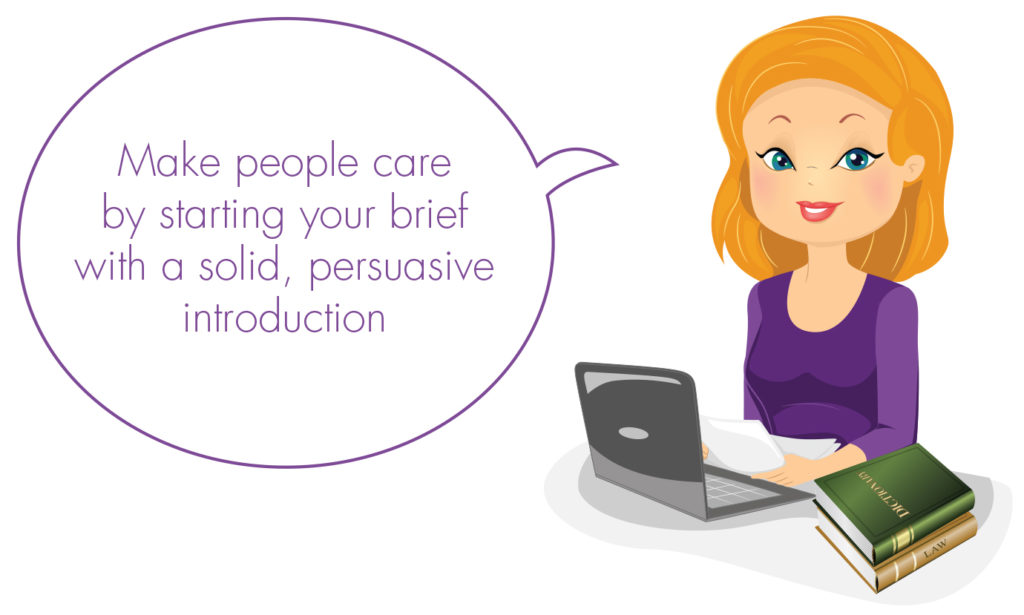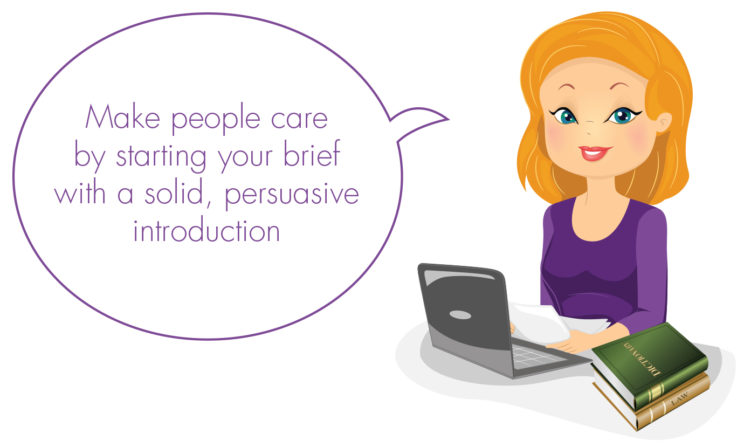If you do not begin your brief with an issue statement, that is, a syllogism ending in a question, then open with an introduction that gives the judge a short and persuasive overview of the case. Present the facts plainly and set forth the issues clearly. Be sure to include your thesis, or main point, but don’t clutter the intro with citations and excessive detail.
Here is an example of an effective opener from a brief written by Stephen M. Shapiro, the author of Supreme Court Practice:
Like all other states, Pennsylvania requires funds to finance the construction, maintenance, and repair of its roads, bridges, and tunnels. Also like other states, Pennsylvania raises the funds largely through taxes and fees levied on the users of its highways. A substantial proportion of these taxes is paid by interstate motor carriers. Appellant American Trucking Associations, Inc., as their representatives, has brought this suit not because of any objection to the raising of revenues by highway-user charges or to the level of revenues Pennsylvania seeks to raise, but solely because the discriminatory nature of the two highway-use taxes Pennsylvania has adopted—the marker fee and its successor, the axle tax—favors local interests at the expense of interstate commerce.
In his book, Point Made, legal writing expert Ross Guberman offers four ingredients for cooking up a “sizzling” introduction:
1. Begin with a paragraph or two explaining who the parties are; when, where, and how the dispute arose; what the question is (what the fight is over); and why your side is right. This is the “Brass Tacks” approach.
2. List three or four reasons why you should win. This is the “Short List,” where you “number your path to victory.” Think of the points you would make to the judge if you only had 60 seconds to do so. Include details specific to your case.
3. Give the court “a reason to feel good about ruling in your favor,” such as the fear of (a) misconstruing a doctrine or statute; (b) creating new duties, rules or defenses; or (c) reaching an unfair result or causing harm. Guberman notes that all judges want to avoid (a) and (b), and many judges (off the record) want to avoid (c), as well. This is the “Why Should I Care?” technique.
4. Draw a line in the sand. This is the “Flashpoint” technique, where you contrast your view of the issue with that of your opponent, and thereby pre-empt the other side from “making the case into something it’s not.”
Here’s an example of “Flashpoint” from a brief by Associate Justice of the U.S. Supreme Court Ruth Bader Ginsburg:
The issue in this case is not whether the Constitution compels the University to adopt a special admission program for minorities, but only whether the Constitution permits the University to pursue that course.
In most cases, starting with a “Brass Tacks” passage and adding a “Short List” of the reasons why you should win will result in a persuasive introduction. Guberman advises throwing in “Why Should I Care?” and “Flashpoint” to concoct “the most richly flavored” introduction possible.
Attorney Savannah Blackwell is a former news reporter who covered government and politics for more than a decade, mostly in San Francisco. She can be reached at savannah.blackwell@gmail.com. Follow her on Twitter at @SavannahBinSF.


